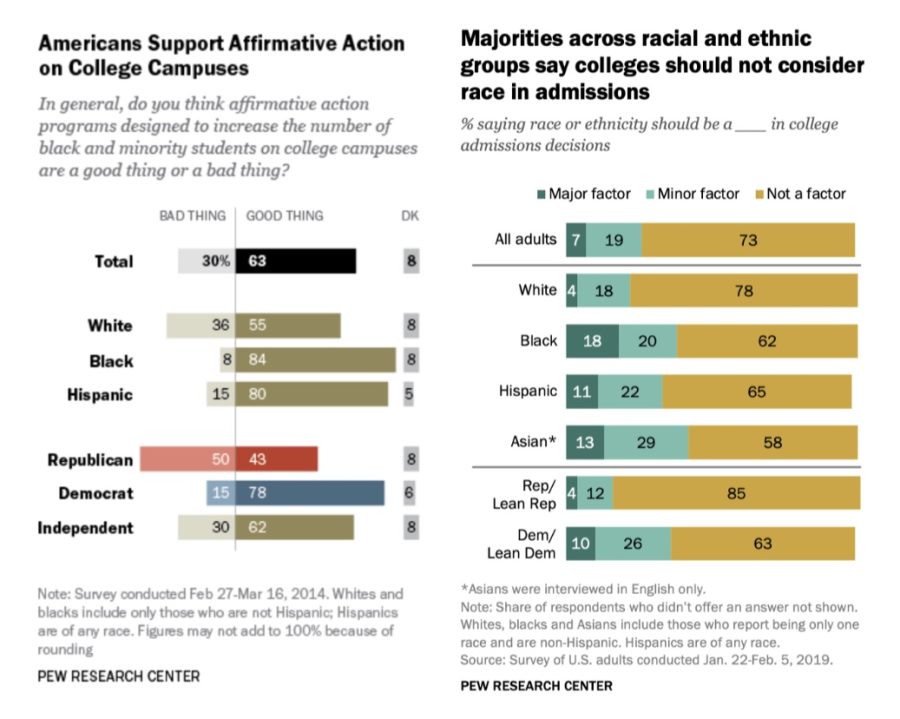An Elusive Enemy
March 1, 2022
While a majority of Americans support affirmative action on college campuses, an even greater percentage do not believe that colleges should consider race in admissions.
The term affirmative action has been misconstrued and remains incredibly misunderstood. In 2016, OiYan Poon, an assistant professor of higher education at Colorado State University, found that among a group of thirty-six Asian Americans with various views on affirmative action, thirty of them were unable to accurately give the topic a definition. When asked about their preferences for admissions at a place like Harvard, nearly all of them essentially described, according to Poon, “race-conscious holistic review, which is exactly what we have today.”
While 73% of Americans say that colleges and universities shouldn’t consider race or ethnicity when making admissions decisions, a different poll five years earlier found that 63% say affirmative action programs meant to increase the number of black and minority students on college campuses are a “good thing.” Seeing as creating a race-based affirmative action program that doesn’t consider race is all but impossible, these positions are inherently contradictory.
Most Americans also probably don’t consider affirmative action programs that are based on gender instead of race, which tend to benefit men, who are underrepresented in higher education (but in universities focused on STEM, women have the advantage). And in the realm of employment, white women are actually affirmative action’s biggest beneficiaries.
The public’s perception of affirmative action has gotten mangled over the decades—sometimes by well-meaning parents who just want the best for their kids, but often by tenacious activists, like Edward Blum, who try to twist the narrative for their own benefit.
Opponents of the practice often paint a sympathetic picture of hardworking students whose dreams of attending their dream schools were shattered because of their skin color—an egregious case of “reverse discrimination.” But their stories sometimes fail to leave out important details. For example, in the Fisher case, of the forty-seven students who were offered admission to the U.T. system despite having lower test scores and grades than Fisher, only five were Black or Latino—forty-two were white. 168 Black and Latino students whose academic performance was as good or better than Fisher’s were also denied admission that year. Under U.T.’s top 10% rule, Texas high schoolers who made the cutoff claimed 92% of the in-state spots, leaving competition for the remaining openings incredibly fierce—Fisher, whose academic performance was nothing spectacular, had no compelling reason to believe that she was denied because of her race.
The debate around affirmative action can get incredibly fierce, pitting students against each other in a way eerily reminiscent of how they’re already viciously competing for spots at top schools, under the impression that every time they open the Common App they’re making decisions that could make or break their future.
Comedian Hasan Minhaj made quips about the Harvard lawsuit and this competition over college admissions in his show Patriot Act: “I’ve been in prep classes where I’ve been told not to check my race. ‘Hey, if you’re Asian, don’t check the box—it’s gonna hurt you.’ The penalty, right? And when I was in high school, I bought into that. I thought I wasn’t gonna get into Stanford because some Black kid was gonna take my spot. But I didn’t get into Stanford because I was dumb! I got a 1310 on the SAT—it was never gonna happen!”
